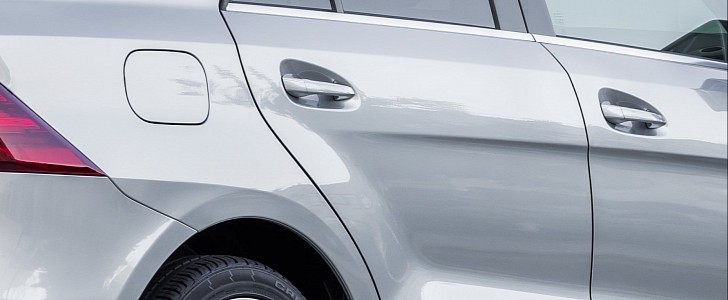Many premium vehicles come with a “soft-close” feature, which means electric motors work to close the door flush once the system detects it. This is a convenience feature that is also extremely dangerous because the electric motors are powerful enough to sever a finger when it gets in the way. That’s something a Mercedes-Benz owner found the hard way and he’s now suing the company.
Depending on who you ask, the soft-close system's usefulness ranges wildly, from being a must-have feature to a “nice-to-have” status to being completely useless for some people. You can add to this list another one, as the soft-close function turns out to be outright dangerous. Reports show several people lost their fingers because of this convenience, and the latest one we know of has sued Mercedes-Benz after his car’s door crashed his thumb.
Richard J. Kastigar, Jr., who also happens to be chief deputy of the Pima County Sheriff Department in Arizona, holds a grudge against his family’s 2020 Mercedes-Benz GLE 450 SUV. In October last year, as he was getting off his vehicle in the garage, he got his right thumb crushed by the door’s soft-close system. Now, he is suing Mercedes-Benz and is asking for compensation, as well as a redesign of the system to include safeguards. In its current form, the soft-close system is “nothing short of a modern-day guillotine," according to the plaintiff.
The problem is that for the soft-close system is almost impossible to detect a finger or other object caught in between the door and the pillar. The system works on a very short travel – a quarter of an inch (6 mm) and this makes it very difficult to detect a foreign object. The system’s power is indeed high enough to break a wooden pencil, let alone a finger.
Although this would not help Mr. Kastigar very much, there are many cases just like his, and some of them went before the court with abysmal results. BMW and Jaguar faced similar lawsuits years ago and the judges dismissed them all. In the case of BMW, the judge said “humans have been slamming their fingers in doors since doors were invented and the doors on BMW's vehicles are no exception.” We doubt Mr. Kastigar would be more successful with his case against Mercedes-Benz.
Richard J. Kastigar, Jr., who also happens to be chief deputy of the Pima County Sheriff Department in Arizona, holds a grudge against his family’s 2020 Mercedes-Benz GLE 450 SUV. In October last year, as he was getting off his vehicle in the garage, he got his right thumb crushed by the door’s soft-close system. Now, he is suing Mercedes-Benz and is asking for compensation, as well as a redesign of the system to include safeguards. In its current form, the soft-close system is “nothing short of a modern-day guillotine," according to the plaintiff.
The problem is that for the soft-close system is almost impossible to detect a finger or other object caught in between the door and the pillar. The system works on a very short travel – a quarter of an inch (6 mm) and this makes it very difficult to detect a foreign object. The system’s power is indeed high enough to break a wooden pencil, let alone a finger.
Although this would not help Mr. Kastigar very much, there are many cases just like his, and some of them went before the court with abysmal results. BMW and Jaguar faced similar lawsuits years ago and the judges dismissed them all. In the case of BMW, the judge said “humans have been slamming their fingers in doors since doors were invented and the doors on BMW's vehicles are no exception.” We doubt Mr. Kastigar would be more successful with his case against Mercedes-Benz.









